Are you ready for some exciting cat photography secrets?! I wrote this with my rescue pet photography in mind, but there are lots of ideas here that will help with any pet photo work.
*This post was updated on Nov 21st, 2014. So a few new things have been added!
Many people know, in this very visual and internet-savvy age, that quality and professional photos can really get rescue/shelter animals noticed online. Great images drive up adoptions because they stand out and get people to call and come in to meet their new companions. I’ve been driven to constantly improve my craft with regards to pet photography at the rescue; I love that I can make a difference with my skills. I’d love to share some tips of mine here for those who may be thinking of contributing their photography skills in order to help out at their local animal shelter. Shelters and rescues always need help in this area; the influx of homeless animals is always there.
Just about 99.99% of my rescue photography is with cats, and my focus is generally on the adult and harder-to-adopt cats. The kittens often get quick photos done on spay and neuter nights or on intake by other volunteers. My specific help is based on the need for someone to take better photos to get the adult and harder-to-adopt cats noticed, as we often barely need a photo up for the young ‘uns before someone will come in asking to adopt a kitten. Animal Talk is the only no-kill rescue in the city of Seattle and so we are always overflowing with many adult cats! [*Note: my original post was written before we became Seattle Area Feline Rescue. We were formerly known as Animal Talk Rescue]
One of my biggest and best tips is to have a dedicated helper when photographing cats. I have to do a large amount of my photos with the cat(s) in the tiniest room (called the ‘office’, and that’s only because it has some filing cabinets in there). It’s really approximately a 5 by 5 foot tiny space with cat crates piled high and I’m photographing the cats on top of said filing cabinets (about 2 by 3 ft). And I’m on a little stepladder! I should take a photo one day to show you this tiny space…
As I said, I usually have someone help me keep the attention of the cat on the filing cabinet…and generally with a toy and lots of physical attention, petting them. No cats jumping off that cabinet, please! Dangly toys I find are great for getting their attention and to get the cats looking up…I get great eye shots that way. Experimenting with different sounds you can make with your mouth, like bird chirps, can really help too. Cats are more indifferent to noises than dogs, but they do help. I also find myself talking a lot to the kitties, especially when I photograph alone; they like the sound of the human voice and love the attention. Don’t be afraid to sound silly!
I usually take my time getting those first shots off with each cat so I can gauge how they are going to act and to warm up to being out of a crate. I used to volunteer at the rescue (doing crates) years ago, and also worked as a vet tech, so I feel like I have a good grasp of cat behavior by now. They can vary so much in how they act when in that environment; we get a lot of our adults from hoarding situations and from a high-kill shelter in Eastern WA, so I’d say there are a good lot of freaked out kitties… (*more on behavior below)
There are also what we call ‘kitty suites’ at the rescue; 3 small rooms that have about 8-10 cats in them, and those I go into by myself. It gives the cats a better chance of acting more naturally and they also usually like having me as a visitor and come to investigate me. The only way to get the shy ones in these rooms is by doing a lot of tricky maneuvering, and having a zoom. I was using my 18-55mm kit lens (a kit lens is perfectly adequate!) in the rooms with flash (Nissin di622) on my Nikon D7000, but just got a Sigma 17-70mm so having a wee bit more reach can help with ones high on the beams or cat trees.
So I do use flash with my ‘elaborate’ filing cabinet setup; in that room, we have a painted wall in the corner and I use a floor-drop. Sometimes hanging a different fabric there instead, is a good way to change up the background.
I will use a faster prime with no flash if I decide it’s not worth harassing a kitty to come out of their ‘window’ or crate, and so am taking those with my head and camera in them. The lens that is nearly always have on my camera for these types of images is a 35mm 1.8. I love this little lens! If you can photograph in the front of a cage, enclosure or crate, this is the best lens for that, and no flash needed. Drive the ISO up, and don’t worry about noise in your final image; you can usually grab some great images at an f stop of about 2.8 – 4; you want those eyes in focus above anything else. I also wouldn’t go any lower than 1/100 for shutter speed for a chill cat.
*If you’re really pressed for time to get your images back to the shelter, or upload quickly to a site, shoot in JPEG to cut down on your workflow, but that said, I always shoot in RAW. I like the flexibility in post and have a workflow that involves mostly Lightroom for batch processing and quick changes.
Another important piece of advice is to take your time to gauge behavior and let the cat ‘warm up’. Study cat behavior, what makes cats tick, how they move, how they respond to you. Do this without a camera in front of your face on your own time. It will be enormously helpful. Obviously having that dedicated cat wrangler can help with difficult or anxious cats when you’re shooting in an environment like a rescue or shelter. Another person can help calm, distract, and comfort a nervous kitty. It’s also helpful with respect to having that person take cats in and out of cages/crates for me so I don’t have to put camera down, etc. But ultimately it’s up to you to really understand cats if you want to get good photos of them. Studying their behavior will also prevent scratches and bites! Those can totally ruin a good photo session…
Are you ready for the #1 tip???
It’s to HAVE PATIENCE. I can’t stress it enough! I am very deliberate about my photos with cats; I don’t click away on that shutter, and just ‘hope’ to catch something. Even if it takes a few minutes, something good will come if you wait. You can’t rush a cat! Some people that watch me shoot don’t understand why I’m not snapping away (the ‘spray and pray’ method); honestly it really doesn’t work unless you really are trying to get action shots. I feel like I do my best when letting the cats lead, and that takes a bit of waiting for the right moment. You can’t make a cat do anything they don’t want to!! I like that challenge. When I take my time too, I get a feel for what kind of personality I want to have people notice in the cats’ photo; I want to see their real characters come out. I want to see a connection in those beautiful cat eyes. That’s what people are drawn to when they see the photos. Your goal here it to get someone to notice the cat enough to want to meet them, just come into the rescue, and if you can do that with just one excellent image to show off the essence of that kitty, you have succeeded! Your images can make a difference and I promise you, they can save lives. It’s a wonderful thing to do.
Feel free to let me know if these tips help you in your quest to help at other shelters and rescues!
Anyway, you can find much more of my cat photography at http://facebook.com/kamoorephoto 🙂 ![]() Come and follow my page!
Come and follow my page!
xo ~ K
Some specific image examples below.
(*Please do not copy, share, alter, crop or use my images for your own, this is copyright infringement. Please contact me for permission to share or link to these images on your site. They are the intellectual property of K.A.MOORE PHOTOGRAPHY. I appreciate you respecting these requests ~ thank you!!*)
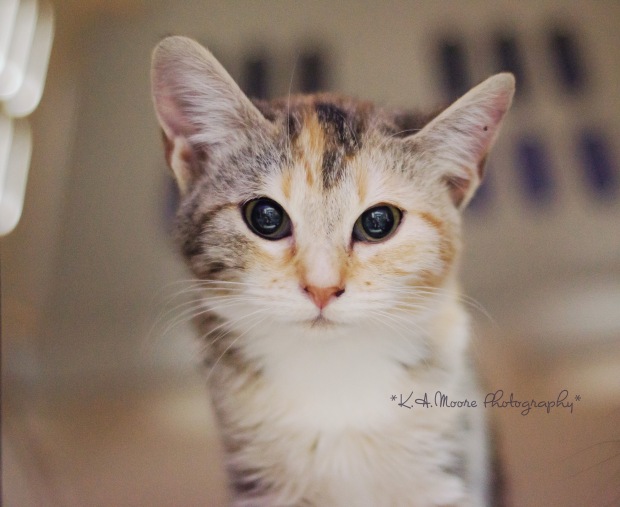
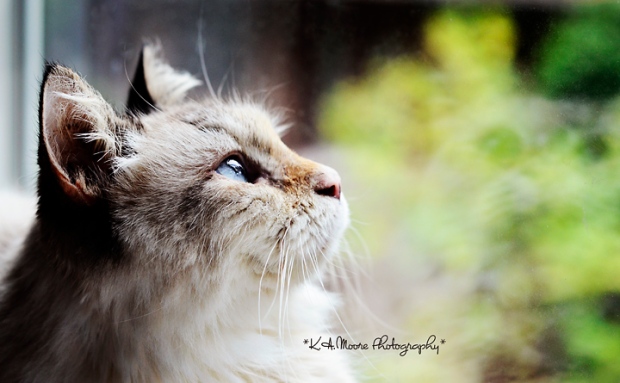
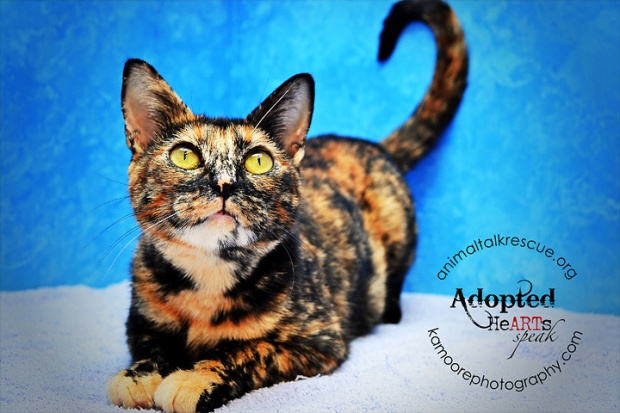
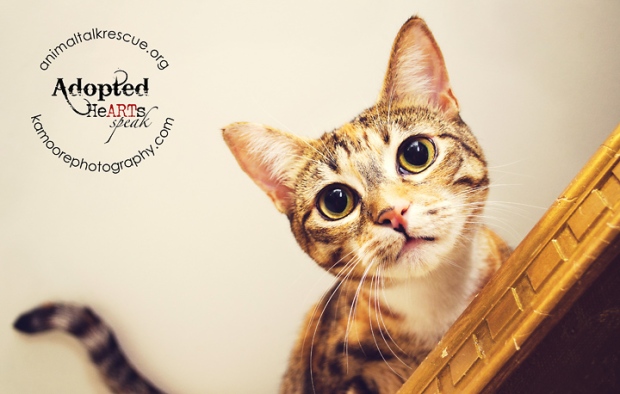
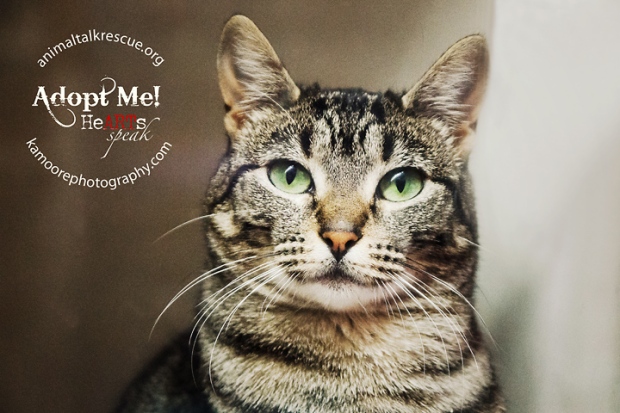
Wonderful tips! Thank you so much. I too wish you had posted a pic of the tiny room you work in. Great photos and lovely cats. Thank you for helping them with your talent!
LikeLike
Thank you!! I hope they are useful to others. Soon I will try and post a picture of the room. It would make many a professional photog have a giggle 😉
LikeLike
This is great! Thank you so much for sharing!
LikeLike
You’re welcome! Sorry this took me a while to get back to you 😉
LikeLike
Could you rig an o-ring to the ceiling and then slip a toy on a string through that you can move up and down to dangle as needed? Thanks for the tips. I need to photograph my foster kitties today.
LikeLike
I have definitely been contemplating a rig for the ceiling; brilliant idea. Last time I tried sticking the rod for the dangly feather toy in my hair for a brief moment but that doesn’t work so well (nor with it in my mouth!) 😉
LikeLike